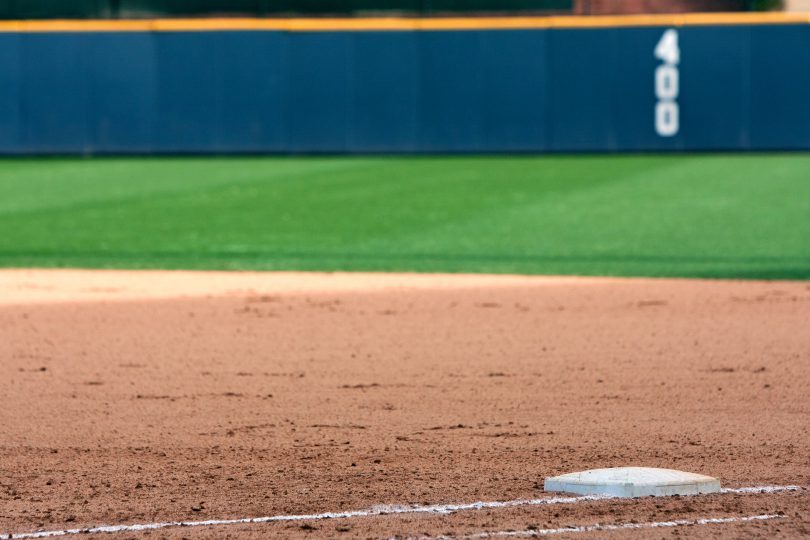By Ethan Guevin
The Situation: Tie game 2-2 in the bottom of the 8th inning. There is a runner on third base, 1 Out, and the 8-hitter is up. The infield is playing in on the grass at the corners and the middle is back. The 3rd base coach puts on a green for the runner at 3rd ; meaning he should run on any contact with a down-angle off the bat.
The Play: The hitter hits a hard chopper right at the 3rd baseman. Acting on the coach’s signs, the runner takes off from third base towards home. The 3rd baseman fields the chopper cleanly and fires a strike to the catcher. Seeing the good throw and knowing he has no chance at home, the runner stops and is caught in a run-down between 3rd and home. He draws 4 throws before tiring, and is tagged out.
Meanwhile, the hitter, frustrated by his inability to put the ball in play to the center of the diamond, runs hard to first, angry and oblivious to the situation. He runs hard through first to the outfield grass and is safe at first base. He gets to the grass and turns around as the last throw and tag are being made on the runner at 3rd base.
The Outcome: The 8-hitter is left at first base, out of scoring position. His failure understand and read the situation makes it so his team will trade a runner in scoring position for a runner on first base, rather than a runner in scoring position for a different runner in scoring position. Now, his team will need an extra-base hit or multiple hits to score him. Even though the 9-hitter gets a base hit up the middle, the lead-off man strikes out, stranding runners at the corners.
What Went Wrong?
When a runner at 3rd gets into a run-down, the trail runner always needs to be aware of the possibility of moving up. In this situation, the runner at 3rd was going on any ball hit on the ground, so the batter needed to realize that if the play was not being made at first, something was not right. Either there was an error, a play at the plate, or a run-down. In any of these cases, the batter needed to look at the first baseman for clues, his own first base coach for help, and find the ball.
A runner always need to know if there was a play at first. If not, a runner needs to get to first and read the play. If the runner at 3rd does a good job and can stay in the run-down for a few throws, the trail runner needs to get into scoring position. With 2 outs, the vast majority of college runners will score on a base hit from second. However, if the runner stays at first (like in this situation), it will take an extra-base hit or a string of good outcomes to score him. Even though the runner in this situation had plenty of time to get to second and in scoring position, he let his emotions get the best of him. He should have scored on the next hitters’ base knock, giving his team the lead. Instead, he was stranded.







